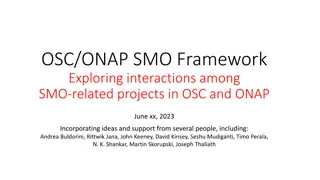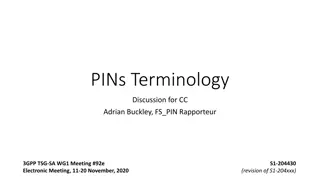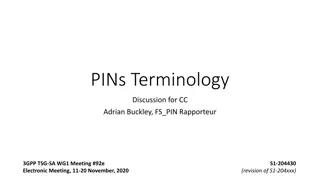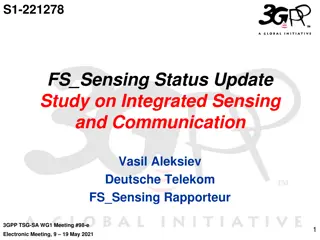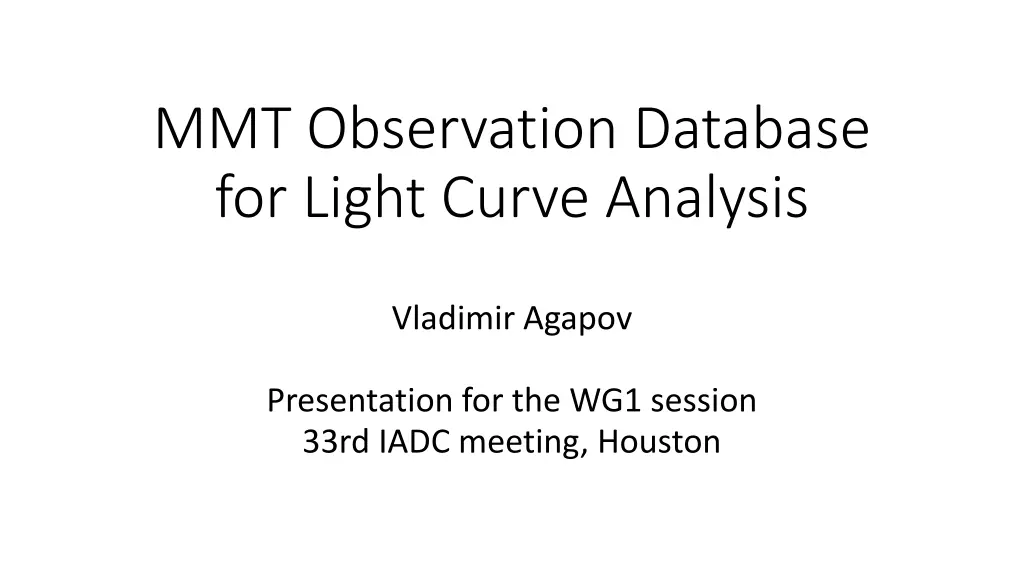
MMT Observation Database for Light Curve Analysis
Explore the MMT Observation Database for Light Curve Analysis presented at the 33rd IADC meeting in Houston. Learn about the MMT Multichannel Monitoring Telescope designed for detecting optical transients like GRB afterglow, novae, supernovae, and variable stars. Understand the characteristics and use of the MMT, including its space debris observation capabilities and database. Access photometric and astrometric observations collected for satellites and discover the classification of light curves as Periodic, Aperiodic, and N.
Download Presentation

Please find below an Image/Link to download the presentation.
The content on the website is provided AS IS for your information and personal use only. It may not be sold, licensed, or shared on other websites without obtaining consent from the author. If you encounter any issues during the download, it is possible that the publisher has removed the file from their server.
You are allowed to download the files provided on this website for personal or commercial use, subject to the condition that they are used lawfully. All files are the property of their respective owners.
The content on the website is provided AS IS for your information and personal use only. It may not be sold, licensed, or shared on other websites without obtaining consent from the author.
E N D
Presentation Transcript
MMT Observation Database for Light Curve Analysis Vladimir Agapov Presentation for the WG1 session 33rd IADC meeting, Houston
MMT Multichannel Monitoring Telescope (Mini-MegaTORTORA) Developed jointly by Kazan Federal University (Russia), Special Astrophysical Observatory of the Russian Academy of Sciences and Parallax Ltd company Put into operation in June 2014 Main purpose search for optical transients: GRB afterglow, nova, SN, variable stars, etc 2
MMT Characteristics Location: 41 25'53.3" E, 43 38'59.5" N, 2030 m 9(10) channels (2 per mount, 5 mounts) Each channel consists of Canon objective (71 mm, 1:1.2) + Neo sCMOS Andor 2560x2160 pix (6.5x6.5 m, 30-60% QE for 4000-8000 A range) + BVR filters + polaroid 900 square degrees coverage for the whole system Each channel on different field center or all channels on same field center 10 frames per second Sensitivity (S/N=5, B filter, 22m/sq.arcsec background sky brightness) : 12m for 0.1 s exposure time, 14.5m for 10 s (100 stacked frames), 17m for 1000 s (10000 stacked frames) Information flow 1 Gb per second Amount of data collected per night up to 6 Tb per channel 3
MMT use for space debris observations Objects on near-Earth orbits have been detecting as one of a kind of optical transients (no dedicated observations of space debris!) A few hundred detectable objects are crossing FOV of the system during one night Fully automated selection of optical transients that can be associated with orbital objects 4
MMT space debris observations database (1) Photometric and astrometric observation have been collecting Astrometric low accuracy (due to large image scale), so has limited usefulness Photometric observations (light curves) are much more interesting Normally obtained without filters but sometimes with B, V or R filter Measurements have been associated with known orbital objects using public orbital data official TLE distributing via SpaceTrack or produced by amateurs Accessible via Web at http://astroguard.ru/satellites 5
MMT space debris observations database (2) 33455 tracks for 4093 satellites are collected between Jun 4, 2014 and Mar 27, 2015 Data for 1800 satellites are already made available for public All light curves are classified as Periodic, Aperiodic and Non-variable: Periodic - significantly periodic light curves Aperiodic - stochastic brightness variations or not enough data to estimate the period Non-variable - brightness is not varying significantly Search of data can be performed by object name, catalogue number, range of brightness variation period, type of variability Data are averaged for each satellite but data for every individual track can be also accessed 6
Object 24871 (IRIDIUM 920) example Light curve periods for all collected tracks 8
Object 24871 (IRIDIUM 920) example Light curve for individual track 9
Object 24871 (IRIDIUM 920) example Folded light curve for individual track 10
Object 24871 (IRIDIUM 920) example Standard magnitudes (1000 km distance, 90 deg phase angle) calculated for individual track 11
MMT Web Site Satellites observations http://astroguard.ru/satellites Meteors observations http://mmt.favor2.info/meteors 12

